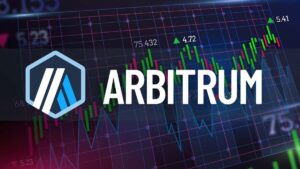TL;DR
- Investor Behavior Shift: Long-term holders are retaining their Bitcoin, leading to decreased sell-side pressure and setting the stage for a market breakout as short-term holders become more active.
- Holding Preference: Over half of the Bitcoin supply hasn’t been moved in over two years, indicating a strong preference for holding, which is reducing distribution pressure and supporting market stability.
- Market Indicators: The Liveliness metric and URPD metrics suggest a market leaning towards holding rather than selling, with strong support just below the current price, hinting at a potential for price discovery and a breakout if demand persists.
According to Glassnode’s most recent report, a market breakout could happen as Bitcoin is witnessing a significant shift in investor behavior, with long-term holders (LTHs) showing a preference for holding onto their assets, while short-term holders (STHs) are increasingly active.
This dynamic is setting the stage for a potential market breakout, as sell-side pressure decreases and capital inflows stabilize. In March and April, as Bitcoin approached its all-time high (ATH) of $73,000, there was a notable decline in the supply last active for one and two years.
This indicates that LTHs were distributing coins to meet new demand. However, the supply held by investors for over three years continues to rise, suggesting they are waiting for even higher prices before selling.
More than half of the Bitcoin supply has not been transacted on-chain in over two years, pointing to a growing preference for holding. The LTH Binary Spending Indicator reflects this trend, with a marked decline in LTH supply into the ATH.
In recent weeks, distribution pressure from LTHs has eased, allowing the market to breathe and reducing overall resistance. Conversely, the STH supply has surged, representing new investors entering the market.
What the Liveliness Metric Means for Market Breakout

The divergence between LTH and STH supply underscores a cooling off of distribution pressure among mature investors. The Liveliness metric captures this change, indicating a greater volume of coin day creation than destruction, a sign of the market’s preference for holding over distributing for profit.
Despite these shifts, demand remains modest. The Realized Cap, a unique on-chain metric measuring cumulative USD liquidity, stands at $574 billion. Capital inflows have slowed since the peak, with the daily change in Realized Cap serving as a gauge for these inflows.
The recent liquidity injection was sharp, reaching $3.38 billion per day, but has since cooled. With declining sell-side pressure and modest capital inflows, market volatility is compressing. The Sell-Side Risk metric, which evaluates coins spent on-chain relative to the asset class size, shows a decline, indicating market equilibrium.
The URPD metric reveals that approximately 15.9% of the coin supply is held just below the current spot price, providing strong support. Only 1.1% of the supply is above the current price, suggesting that sustained demand could lead to price discovery.
The reduction in sell-side pressure from mature investors, coupled with compressed volatility and a solid foundation of support, positions the Bitcoin market for a potential breakout. As the market rallies above $70,000, the risk of top-heaviness diminishes, paving the way for positive price action.












